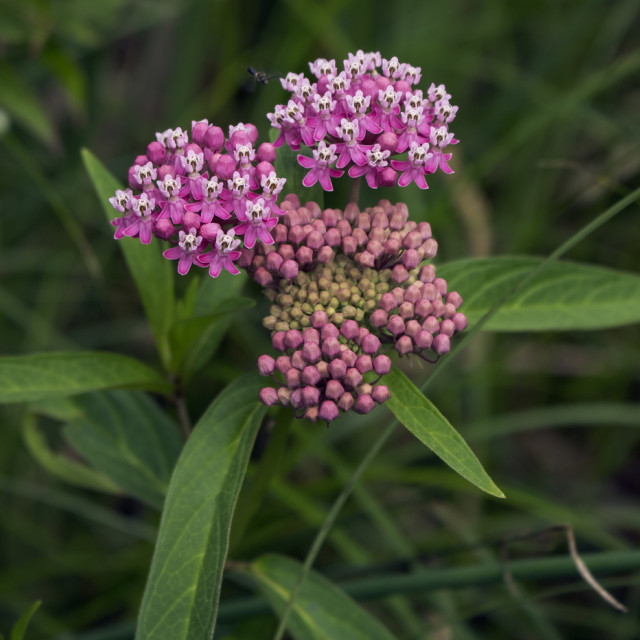COMMON NAME
Swamp milkweed
SCIENTIFIC NAME
Asclepias incarnata
ALSO KNOWN AS
Rose milkweed, Swamp silkweed, White indian hemp
Plant family
Dogbane (Apocynaceae)
Plant group
Wildflowers and Herbs
Swamp milkweed is an elegant herbaceous, branching perennial that typically grows 3-5 feet tall. Commonly found in wetland habitats.
236 reports
86+
OBSERVERS
236+
OBSERVATIONS
Identification hints
Swamp milkweed can be distinguished from other milkweed species by their long slender leaves, branching habit, and flower clusters that stand erect.
Did you know?
Swamp milkweed is an important plant for pollinators, especially the Monarch butterfly. Like other milkweeds, Swamp milkweed contains a chemical called cardiac glycoside which is toxic to most animals if ingested (including humans). The caterpillars of the monarch butterfly can eat the plant without being harmed and can take up the cardiac glycosides to protect them against predators that might be tempted to eat them. Swamp milkweed has also been used by humans, especially indigenous groups for a variety of uses. They harvested dry plants for their fibers to make ropes and, with proper preparation, were able to create remedies for a variety of ailments including chest pains, stomach problems, and childbirth issues.
DISTRIBUTION IN TH U.S.
Alabama
,
Arkansas
,
Colorado
,
Connecticut
,
District of Columbia
,
Delaware
,
Florida
,
Georgia
,
Iowa
,
Idaho
,
Illinois
,
Indiana
,
Kansas
,
Kentucky
,
Louisiana
,
Massachusetts
,
Maryland
,
Maine
,
Michigan
,
Minnesota
,
Missouri
,
Montana
,
North Carolina
,
North Dakota
,
Nebraska
,
New Hampshire
,
New Jersey
,
New Mexico
,
Nevada
,
New York
,
Ohio
,
Oklahoma
,
Pennsylvania
,
Rhode Island
,
South Carolina
,
South Dakota
,
Tennessee
,
Texas
,
Utah
,
Virginia
,
Vermont
,
Wisconsin
,
West Virginia
,
Wyoming
HABITAT
Swamp milkweed grows in wet soils in a variety of habitats both high quality and degraded.
ATTRIBUTES
Leaves
The leaves grow opposite one another along the stems with a short petiole. Leaves and are long and narrow, 2 ½ "-6" long by ½ -2½" wide, tapering off at the leaf's tip. The leaves have a coarse texture, and can sometimes turn purplish at the end of the growing season.
Flowers
Swamp milkweed flowers are arranged in clusters of more than 20 flowers. The individual flowers are about ¼" across, the petals pink to mauve and bent downward. The central column has 5 whitish hoods. Some commercial varieties of swamp milkweed are deep purple or white.
Fruits
Fruit is a seedpod that opens along one side (follicle), usually about 3-4" long. The follicle is slender, smooth, and hairless, turning brown at maturity. The flat oval-shaped seeds have a large silky tuft of hair attached.
Bloom Time
Blooms late summer for about one month.
See Menu
Budburst is a project of the
Chicago Botanic Garden
One of the treasures of the
Forest Preserves of Cook County
Creative Commons
BY-NC-SA 4.0
- 2021 Chicago Botanic Garden. All Rights Reserved.
- Terms of Use
- Privacy Policy
- Data Sharing and Citation Policies
- 2021 Chicago Botanic Garden. All Rights Reserved.



